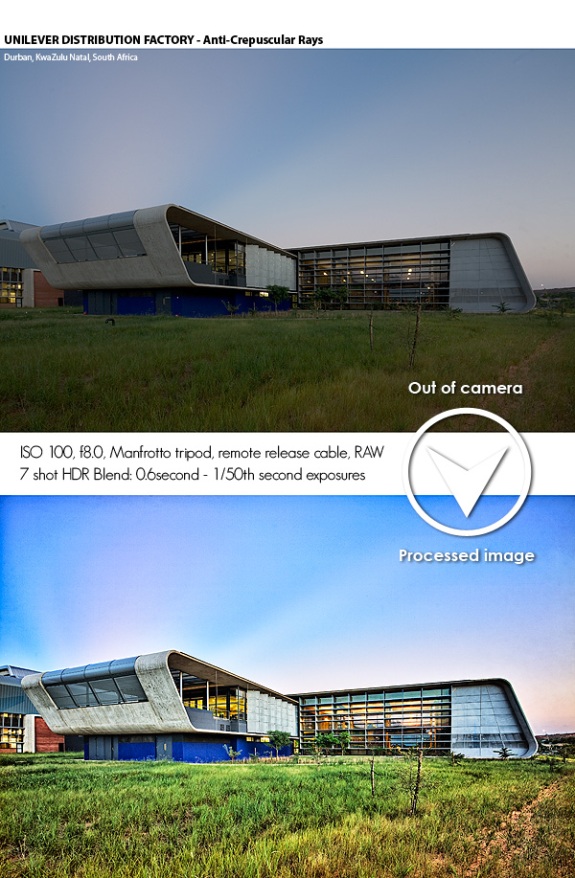Following some questions I received on the Anti-Crepuscular Ray post I did yesterday I thought I’d showcase a typical before-and-after shot featuring these. The question I received was regarding whether the rays are actually visible to the eye at the time of shooting or whether it was something I did in post-processing to bring these to the fore.
I shoot all my commercial work in RAW of course and in this particular instance shot a sequence of 7 bracketed HDR shots to expose for the various levels of light. You can see from this mid-exposure capture below that the light rays are clearly visible in the sky as a series of pinkish-red light streaks. The darker the exposures are the more pronounced the rays became but of course then the foreground burnt too dark for any realistically acceptable final image. When you ‘lift’ shadows in post-processing you always get noise (grain) and chromatic aberration (colour noise) so shooting a HDR sequence and doing an as-realistic-as-possible blend is really the only way to go in instances like this.
Once the HDR composite has blended I do some quick and simple adjustments to levels and curves, contrast, and some luminosity masking to bring maximum potential to the capture. I also work in some bespoke colour spaces that help me maximise colour rendition in my imagery without having to force super-saturation into the captures. I don’t ever add things that aren’t there and rarely take away things that are so my images are within reason pretty much as I saw them with my eye at the time.
There are always arguments about the validity of post-processing in photography and those who prefer to leave their images as-shot. If you fully understand the limitations of mechanical devices like digital cameras and their inability to ever fully replicate what the human eye is capable of seeing then you’ll surely not be able to argue against the potential that post-processing and Photoshop (and similar software) can offer to bring maximum potential to any image…?!

I prefer the “unprocessed” image, call me old-fashioned maybe!!!
That’s very interesting, thanks for the comment Ian. I guess at a professional level it’s also fair to admit that there’s an embodied truth that you can’t realistically/profitably sell an image that is straight out-of-camera and which is quite like something that anyone could do at a point-and-shoot level. It’s largely in the post-production that photographers/artists differentiate themselves from one another, define their style, and create a product that a customer might be prepared to buy for a fair price?